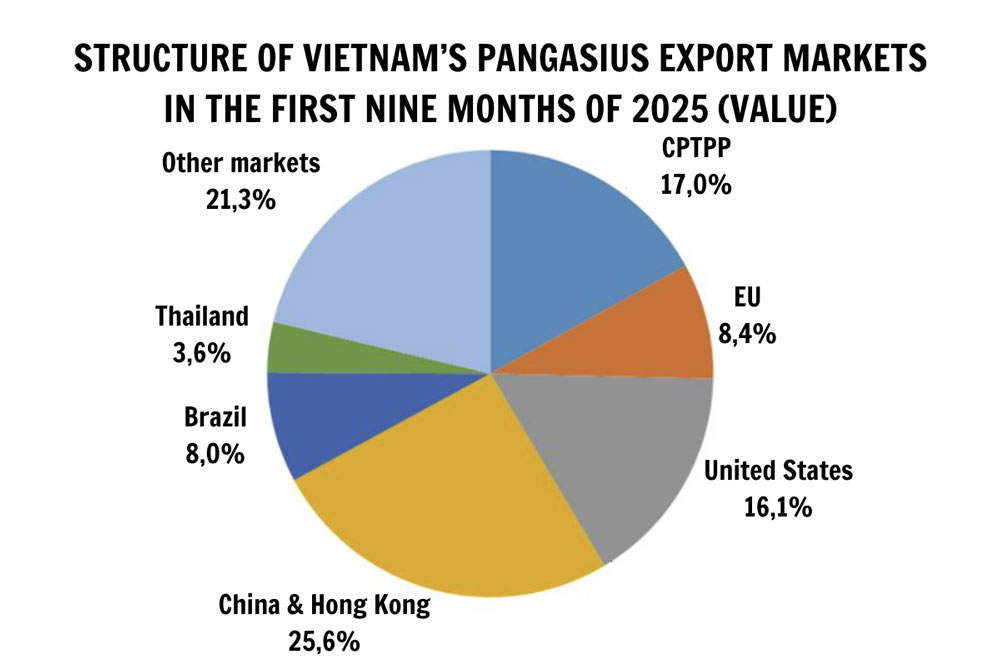Vietnam Seafood
Pangasius exports in the first nine months: clear market shift, CPTPP and Brazil surge ahead
CPTPP and Brazil Expand Market Share
Compared to 2024, the CPTPP (including Japan, Canada, Mexico, Chile, etc.) posted impressive 35% growth in the first nine months of 2025, reaching $271.4 million and lifting its share to approximately 17% of total export value (up from 14% in 2024). This surge reflects both tariff advantages under the trade pact and rising regional demand for sustainably sourced seafood products.
Brazil continues to stand out as a bright spot in South America with pangasius imports from Vietnam surging 45% to $128 million – a 2% increase in market share to 8% of total exports. Thailand also recorded solid growth of 27%, reaching $58.3 million, supported by recovering domestic consumption and re-exports to ASEAN markets.
Traditional markets ease slightly but retain dominant
In contrast, China – Hong Kong, Vietnam’s largest pangasius market, showed signs of stabilization, reaching $409.8 million in the first nine months of 2025 – a modest 2% decline from the same period in 2024. Nevertheless, it still commands nearly 26% of total export value, remaining the cornerstone of Vietnam’s export structure.
Exports to the United States totaled $257.2 million, representing 16% of total turnover, a 2% decline in share year-on-year. This reflects market saturation, intensifying competition from other whitefish species such as Alaska pollock and cod, alongside ongoing tariff-related headwinds. Meanwhile, the EU maintained a stable 8% share, generating $134.2 million – supported by rising demand for convenience foods and a shift away from Russian supplies.
Notably, the “other markets” cluster (Middle East, South Asia and Africa) recorded $340 million, up 3.6%, reflecting Vietnamese firms’ proactive efforts to diversify and mitigate concentration risk.

Vietnam’s pangasius export landscape in 2025 is thus undergoing a clear rebalancing. Traditional powerhouses like China and the U.S no longer hold absolute dominance; while CPTPP, South America and ASEAN are assuming greater significance. This shift highlights Vietnamese exporters’ adaptability – expanding into new markets while investing in value-added products aligned with global green and sustainable consumption trends.
Given current momentum, industry experts forecast a strong rebound in pangasius exports in Q4/2025, driven by year-end demand and early orders for the 2026 Lunar New Year season. However, rising raw material costs may pressure margins, requiring companies to optimize operations and maintain consistent quality to sustain growth.
Source: https://seafood.vasep.com.vn/



 Tiếng Việt
Tiếng Việt